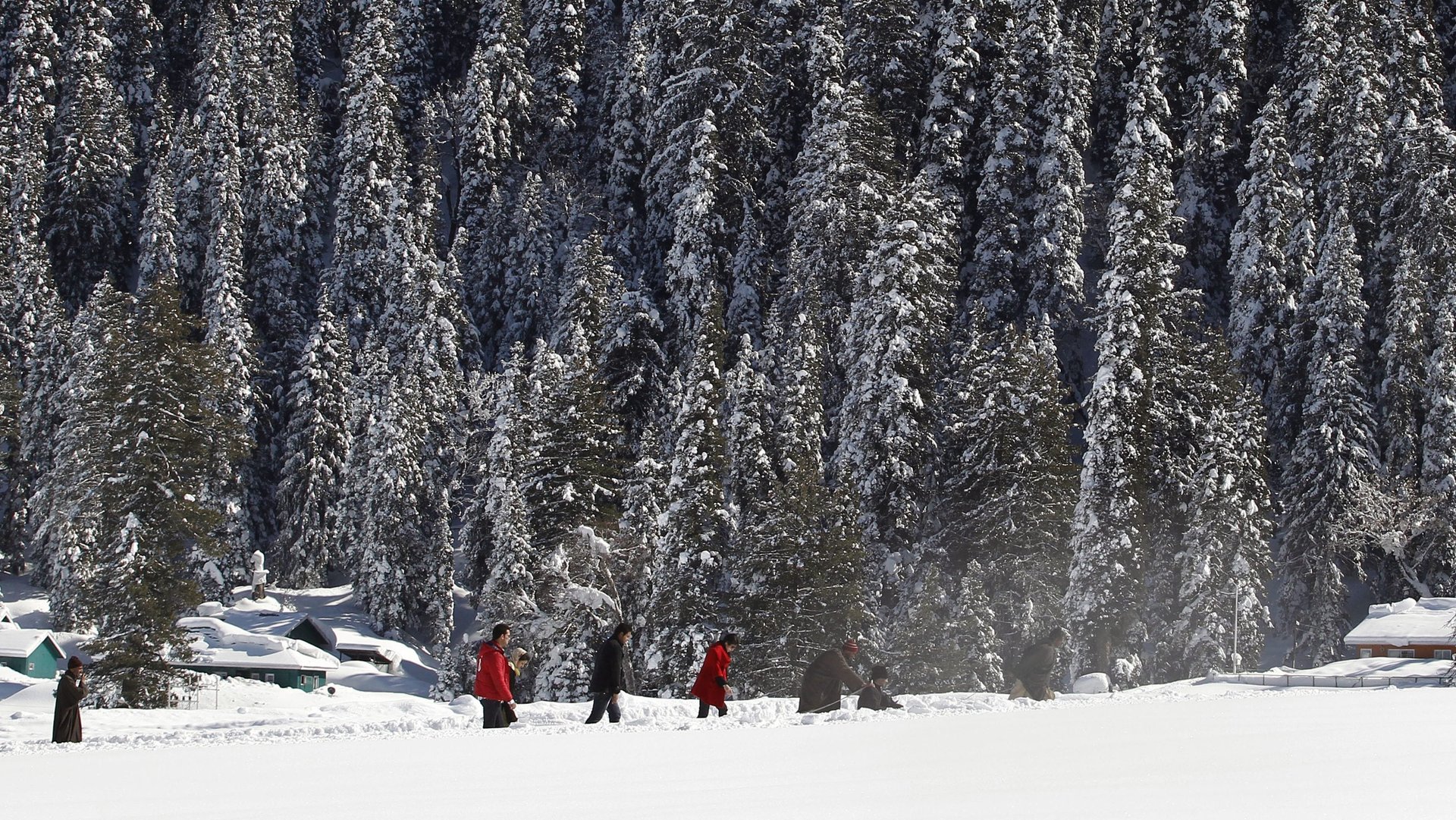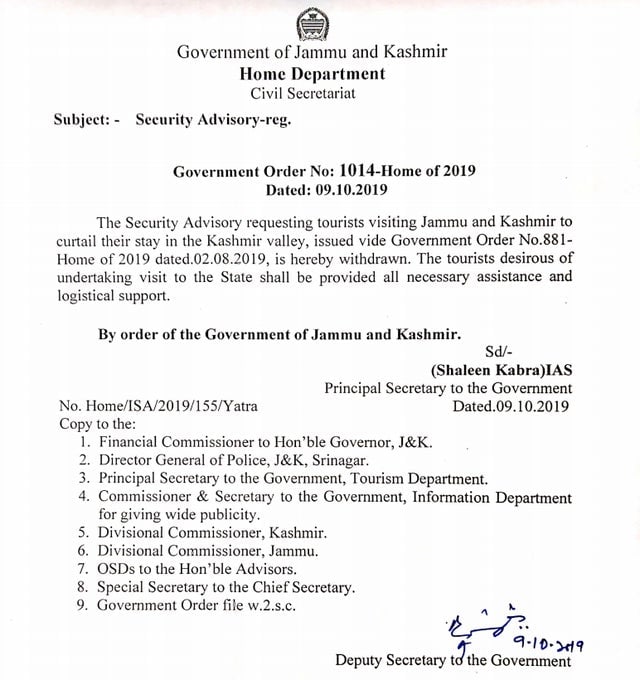India’s shot tourism, Kashmir’s key revenue earner, in its foot
Strife-hit Jammu & Kashmir’s (J&K) biggest revenue earner, its tourism sector, is deep in a hole.


Strife-hit Jammu & Kashmir’s (J&K) biggest revenue earner, its tourism sector, is deep in a hole.
Desperate measures to cushion the industry from the aftermath of India’s drastic move in August, to repeal the state’s long-held autonomy, have had limited effect till now. Two weeks after Kashmir Valley was reopened to tourists, the mood in the sector is far from normal.

“While the region recorded good tourist inflow last winter, hotel occupancy rates are still low and are struggling to go past 20%,” Rajnish Kumar, co-founder of Gurugram-based travel portal Ixigo told Quartz. “Issuing constant travel advisories has also hit the sector.”
Up to 174,000 tourists visited Kashmir in June, followed by 152,000, including 3,403 foreigners, in July. By September, only around 25,000 were left in the Valley, according to NDTV.
“We have seen a year-on-year (YoY) decrease between 25% and 30% in bookings for Jammu & Kashmir (J&K). Search enquiries have also gone down by more than 50% YoY. The valley also missed out on the festive traffic due to cancellation of advance bookings,” said an Ixigo spokesperson.
This despite airfares to the state declining. “There was a 17-20% increase in airfares in August when the travel advisory was issued in July, however, after that, the airfares to Srinagar have decreased by 40% for travel in October-November period,” according to Ixigo.
“A month ago airfares were really low. Probably the lowest I’ve seen in a long time. I flew from Delhi to Srinagar for less than three thousand rupees,” 30-year-old Owais Lone, a resident of Srinagar, who is a senior software engineer for a US-based firm told Quartz. “Another thing I witnessed for the first time that 90% of my flight was filled with the central reserve police force (CRPF) personnel reporting for duty in Kashmir than the civil flyers.”
Tourism plays a crucial role in J&K’s economy. Contributing 8% to the state’s gross domestic product, it also caters to allied sectors like handicrafts, handloom, and transport. In 2017, J&K hosted over 1.2 million tourists, according to government record.
The sector employs over a million people, directly and indirectly, according to industry estimates. However, the sector rarely flourishes as it ought to, given the state’s picturesque landscape and rich cultural heritage. Due to security tensions, J&K is not even among the top 10 domestic tourist destinations in the country.
What’s keeping the tourists away?
For years, border tensions with Pakistan and high taxes have weighed heavy on tourism here, the Ixigo spokesperson said. J&K, despite its scenic beauty, is one of the world’s most militarised zones, with India and Pakistan bickering over the Himalayan region for decades and even fighting wars.
Since the late 1980s, separatist militancy has added to the tourism industry’s woes. There is always the lingering fear of an imminent terror attack. These fears have only worsened since India removed the guarantee of J&K’s relative autonomy. An Oct. 21 report in the LiveMint said Jaish-e-Mohammed terrorists were planning such an attack on civilians and tourists.
What’s worse is the communications blackout imposed since August. Internet, mobile phone connections, and telephone lines were cut off fearing a massive backlash against the repealing of Article 370 of the Indian constitution which guaranteed the state’s autonomy. Though some lines have been restored since then, the state is still largely out of bounds in terms of connectivity.
This makes a revival in tourism next to impossible, residents believe.
“News is doing the rounds that some hotels will get special internet lines but that is not enough. Who would want to be completely detached from their families and the rest of the world just to visit Kashmir?” said Lone.
A dim hope
An undeterred central government is hopeful of a turnaround, though.
It plans to launch a “Back to the Valley” programme, its first major push to boost tourism in the state since the Aug. 5 move.
As part of this, it is asking its own staff to visit the valley. In an Oct. 18 advertisement, the J&K administration asked central government employees to avail their leave travel concession (LTC) to visit the state, the Hindu reported. LTC is the travel-payout component of one’s salary.
Some industry experts, too, are optimistic about the future.
“With the upcoming festive and winter holiday season, we expect to see a rise in demand with snowfall being one of the major attractions,” said Daniel D’Souza, president and country head of Mumbai-based SOTC Travel.